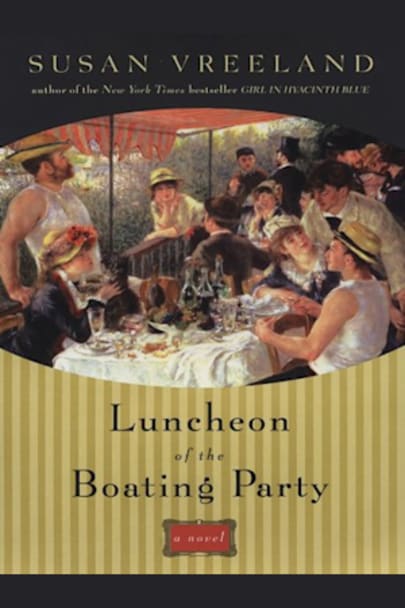From the bestelling author of GIRL IN HYACINTH BLUE, “A vivid exploration of one of the most beloved Renoir paintings in the world, done with a flourish worthy of Renoir himself” (USA Today) With her richly textured novels, Susan Vreeland has offered pioneering portraits of artists’ lives. As she did in Girl in Hyacinth Blue, Vreeland focuses on a single painting, Auguste Renoir’s instantly … painting, Auguste Renoir’s instantly recognizable masterpiece, which depicts a gathering of Renoir’s real friends enjoying a summer Sunday on a café terrace along the Seine. Narrated by Renoir and seven of the models, the novel illuminates the gusto, hedonism, and art of the era. With a gorgeous palette of vibrant, captivating characters, Vreeland paints their lives, loves, losses, and triumphs so vividly that “the painting literally comes alive” (The Boston Globe).
more



wonderful blend of the mechanics of painting and the back story of personal relationships resulting in a masterpiece.
Loved this book it was realistic and a pleasure to read . Will buy other books by this author
Love reading about real life characters.
Luncheon of the Boating Party is the story of Renoir’s painting by the same name, created in 1881, just as France was recovering its composure from the Franco-Prussian war, which would of course set the stage for World War I, but that’s another story. Vreeland has taken pains to recreate the circumstances under which Renoir’s masterpiece was painted, carefully considering the zeitgeist, as well as the individual models. The models ranged from upper-crust Charles Ephussi to Angele, a sometimes-streetwalker in Montmartre, to say nothing of Aline, who will many years hence become Madame Renoir, and Alphonsine, for whom Renoir’s affection is apparent, until she is upstaged by Aline. As the French might say: ouf!
Susan Vreeland has chosen to narrate her work in the voices of Renoir and seven of the models. Although this style can work well, in this case the story felt choppy, leaving gaps here and there. The effect was heightened by the fact that, while the perspective changed, the narrative voice seldom did, such that all of the characters seemed to act and feel alike. Both the characters and the era seemed to me to receive short shrift, although here I am especially cognizant of the fact that, consciously or otherwise, I am comparing them to Shogun, which is more than a little unjust. A more legitimate complaint, I’m certain, is the occasional usage of French, which frequently feels clumsy, interspersed as it is with English in a single phrase, for example the word “two” appearing in English, but the rest in French. I found this both confusing and distracting.
In the sense that Vreeland has imagined the thoughts and feelings of the models as well as Renoir, Luncheon of the Boating Party reminds me of A Piece of the World. In writing the latter, Christina Baker Kline has the advantage or imaging only one model, not the dozen-plus Vreeland faced; perhaps for this reason, Kline was able to create a depth of character that is lacking in Luncheon of the Boating Party.
So what’s the final verdict? Those who love Renoir, or perhaps even Impressionism more generally, will enjoy learning more about the backstory of one his iconic works. It is certainly many measure above The Painted Girls, which belongs to the same genre of creating the backstory for a painting (in this case, Little Dancer Aged Fourteen).
I love everything by this author. Everything I’ve read by Vreeland is well-written and simply delicious!
If you like impressionist art, this is a must read!
One of my favorite books of all time. I read it a few years ago and had to have it to read again on my Kindle.